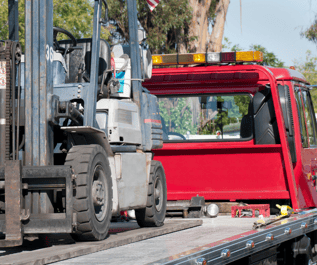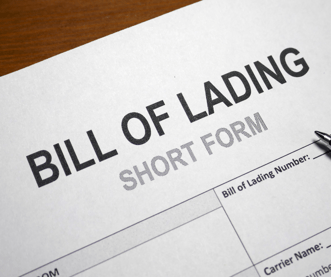What Is a Concealed Damage Claim, and How Can It Be Resolved?
Business Advice | Logistics | Cargo Claims | Transportation | Best Practices | Freight Management
An Armstrong customer once filed a claim for damage to a new machine. Since the damage was not noted on the delivery document and the document was signed free and clear, we explained that the claim would need enough evidence to hold the carrier liable.

The customer provided photos of the machine at loading and delivery. It was discovered that the carrier had transloaded the freight onto a different trailer, which is how the damage occurred. Armstrong explained to the carrier that the machine would need to be returned to the shipper for inspection and repair to reduce the amount claimed.
The carrier agreed, the claim was amended, and the carrier paid in full. Our partnership with the customer and the carrier allowed for a successful claim transaction. To this day, we work for the customer and book loads with the carrier.
Unfortunately, not all claims of this type are resolved so easily. Concealed damage claims are among the most challenging to mitigate. It's often difficult to prove who's responsible. When lines of accountability can't be drawn, it's unclear who should pay.
While these claims are frustrating for everyone involved, claimants can take steps to reduce the headache. This blog post looks at what concealed damage is, how these claims are typically managed, and offers tips on recovering losses.
What is Concealed Damage?

Concealed damage is damage to freight found after the carrier has delivered the shipment and left the delivery location. The delivery bill of lading (the proof of delivery, or POD) is signed by the receiver, also known as the consignee, with no exceptions noted to the cargo. A presumption is made that the load was delivered in the same manner as when shipped.
This type of damage must be reported to the carrier by the delivery location within five days and with a request to the carrier to inspect the cargo. The conversation between the consignee and carrier must be documented, including the number called and the person notified.
How are Concealed Damage Claims Mitigated?
Concealed damage claims move the burden of proof from the carrier to the consignee. Each claim is handled on a case-by-case basis. In some cases, this type of claim is settled by each party (carrier, shipper, and consignee) paying/absorbing one-third of the damage amount. When the damage is not noted on the delivery document, it’s difficult to pinpoint who caused it: shipper, carrier, or consignee.
In other cases, the freight agent or third-party logistics brokerage responsible for coordinating transport will agree to pay the claim to the customer. This is primarily done to maintain the valuable business relationship. When the damages are not noted on the delivery document, the carrier typically does not have to pay the claim. When a carrier denies a claim for this reason, the brokerage chooses how to proceed to reach an acceptable resolution.
How Claimants Can Improve Their Chances of Recovery:
 Train personnel and customers to inspect freight at pickup and delivery; review the legal consequences of their acts and omissions.
Train personnel and customers to inspect freight at pickup and delivery; review the legal consequences of their acts and omissions.- Establish procedures to document evidence of a shipment's conditions at the time of pickup and delivery and while in the consignee's possession.
- Insist on precise notations of condition on delivery receipts, inspection reports, warehouse reports, quality control, etc., with clearly legible signatures.
- Report damages and shortages to the carrier within five (5) days.
- Hold all damages (if salvageable) for the carrier to inspect and/or pick up before the claim is filed.
- Preserve evidence through digital photographs, impact and temperature recorder tapes, "tip" devices, and loading diagrams.
Claims Support Just a Phone Call Away
Not every shipment will arrive at its destination in perfect condition, whether due to inadequate packaging, improper handling, or another factor. Fortunately, you have a better chance of recovering your losses if you know the steps needed to facilitate the legal process before you run into a claim.
At Armstrong, our legal operations and claims teams are committed to making sure you understand your options for resolving all types of freight claims. Get matched with one of our experienced logistics professionals today, and rest easy knowing you have access to free legal counsel when you need it.
About Stephanie Wilson
With over 20 years of experience, Stephanie handles the intake and administration of cargo claims while also resolving emergencies such as hostage loads. As Armstrong's Claims Manager, Stephanie is also responsible for streamlining the department and fostering transparency in the claims process.



